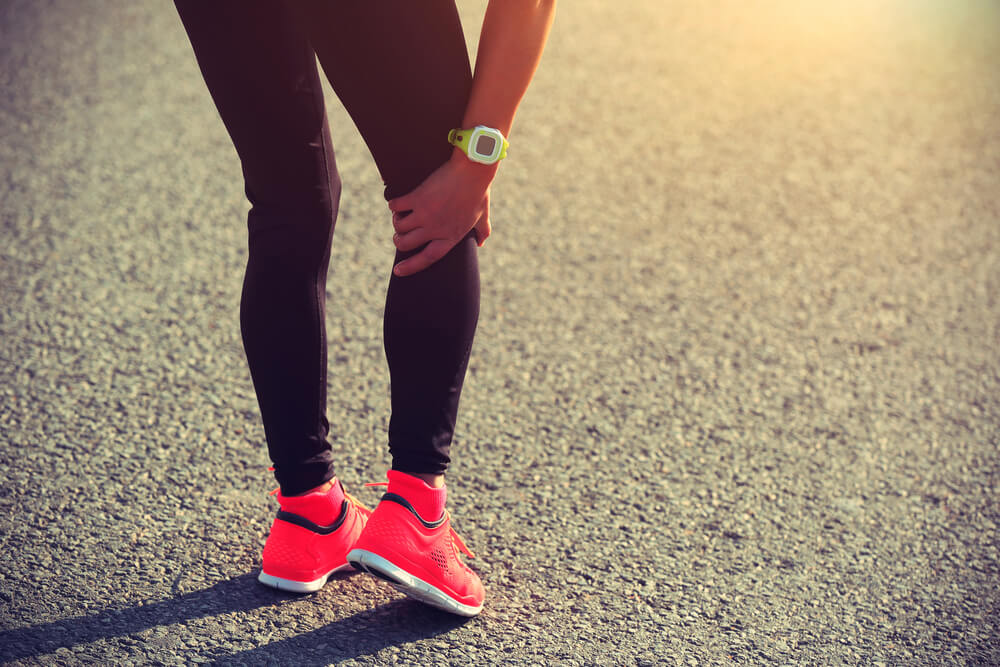The medial collateral ligament (MCL) is a tendon that connects the femur (thighbone) to the tibia (shinbone). It helps to provide stability in the knee joint and prevents excessive side-to-side movement. The MCL can become injured due to a variety of factors and can lead to pain and instability in the knee. Of knee injuries, approximately 40% are due to MCL injuries and are incredibly common to contact sports. MCL injuries typically heal with time; however, sometimes injuries don’t heal as they are expected to do so.
Treatments for MCL injuries
MCL injuries can vary in severity, and treatments to help rehabilitate your knee can vary depending on the severity of your injury. Minor (Grade 1) MCL injuries may not require any additional interventions. If you are experiencing an unexpected delay in healing, you may be dealing with a moderate (Grade 2) or severe (Grade 3) MCL injury. These injuries tend to involve more intensive interventions. Treatment options for MCL injuries can include:
- Rest and ice — For a minor MCL injury, rest and ice may be all you need to help your recovery. For a lingering injury, you could be overdoing it on activity and need to incorporate more rest and ice to help your injury get back on track for healing.
- Bracing – Your health care provider or physical therapist may recommend that you wear a knee brace. This brace can help prevent your knee from moving side to side, allowing your MCL to heal properly.
- Physical therapy — Physical therapy can help improve your strength and the range of motion of your knee. Exercises won’t only focus on your knee, but also your thigh muscle to help strengthen the whole leg. Physical therapy may also include additional modalities to help your rehabilitation.
- Medication — Over-the-counter pain relievers may be prescribed by your health care provider. These medications can help to reduce pain and swelling you are experiencing in your knee.
- Surgery — MCL injuries don’t always require surgery. However, athletes often consider undergoing surgery to help fix their MCL injury. This is due to the amount of stress and pressure their MCL is under when they return to play. Surgery can also be needed if the MCL is accompanied by other knee issues due to the injury.
If you are experiencing a longer healing time than expected, it can help to remember that recovery for Grade 1 and Grade 2 MCL injuries can be 98% with only conservative treatments. Your knee may just need more time than what is considered “normal.”
Physical therapy exercises for lengthy MCL injuries
Physical therapy is an important component in MCL rehabilitation. It can help you restore strength, stability and function to your injured knee. In addition to other techniques, your physical therapist may have you complete exercises in the clinic and at home to help you steer your recovery time back on track. It is important to follow all instructions from your physical therapist. These instructions can include the number of repetitions and times of completion for each exercise. Exercises your physical therapist may have you complete can include:
- Knee flexion with heel slide — Lie on your back with your knees bent. Slide the heel of the affected knee as far as you can. Hook the other foot around your ankle to help pull your heel farther back. Hold for several seconds and release. Repeat as directed by your physical therapist.
- Hip adduction — You will need a pillow to complete this exercise. Sit on the floor with your knees bent and place the pillow between your knees. Place your hands slightly behind your hips to help support you. Squeeze the pillow by tightening the muscles on the inside of your thighs. Hold this exercise for several seconds and then release. Repeat this exercise as directed by your physical therapist.
- Hip abduction — You will need the pillow from the previous exercise to complete this one as well. Sit on the floor with your affected knee close to a wall. Bend your affected knee, but keep your other leg stretched out straight in front of you. Place the pillow between the outside of your knee and the wall. Place your hands slightly behind your hips for support. Push the outside of your knee against the pillow and the wall. Hold for several seconds and then release. Repeat this exercise as directed by your physical therapist.
- Straight-leg raises to the front — Lie on your back with your good knee bent so your foot rests flat on the floor. The affected knee leg should be straight out on the floor. Your low back should have its normal curve. Tighten your thigh muscle of the affected knee leg by pressing the back of your knee flat down to the floor. Keep your other knee straight. While keeping the thigh muscles tight and your leg straight, lift the affected leg up so your heel is several inches off the floor. Hold for several seconds and then slowly lower your leg back to the floor. Repeat this exercise as directed by your physical therapist.
Peak Performance can help you with your lingering MCL injury
Peak Performance can help you on your journey to recover from your lingering MCL injury. Our team of expert licensed physical therapists understand the complexities of the MCL and the frustrations of not healing as you expect. We will design a customized physical therapy treatment plan specific to your needs to help you regain your strength, flexibility and confidence in your knee. As you progress, we will adjust your treatments until you are back in your top form and ready to take on your normal activities. Together, we can work to get you on the path to a stronger and healthier future, not limited by your MCL injury.
Contact us today for more information or to schedule an initial appointment.

